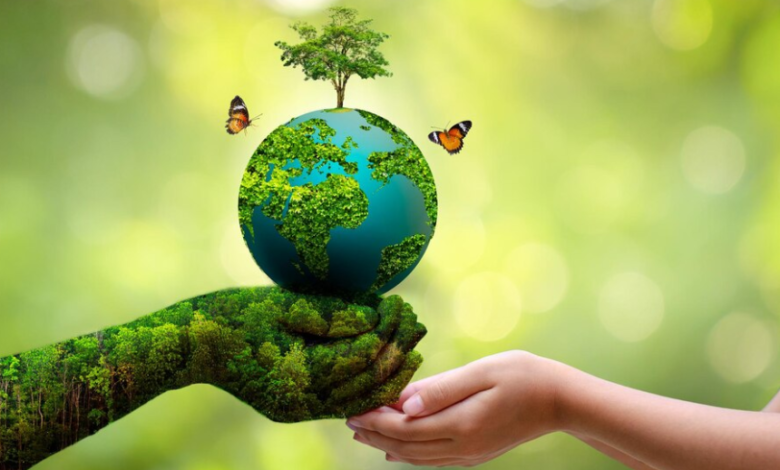Biodiversity and Conservation: Why Protecting Nature Matters

Biodiversity, the intricate web of life on Earth, is fundamental to the health of our planet. It encompasses the variety of life forms, from microorganisms to plants and animals, as well as the ecosystems they inhabit. However, human activities have put this diversity at risk, making conservation efforts more urgent than ever.
This article explores the importance of biodiversity, the threats it faces, and the actions we must take to protect nature.
What is Biodiversity?
Biodiversity refers to the diversity of life in all its forms, levels, and interactions. It is typically categorized into three levels:
- Genetic Diversity: The variation of genes within species, ensuring populations can adapt to changing environments.
- Species Diversity: The variety of species within ecosystems or across the planet.
- Ecosystem Diversity: The range of different ecosystems, such as forests, wetlands, grasslands, and oceans.
See also: The Wonders of Quantum Physics: How It Shapes Our Future
Why Biodiversity Matters
1. Ecosystem Services
Biodiversity provides essential services that support life on Earth:
- Provisioning Services: Food, water, medicine, and raw materials.
- Regulating Services: Climate regulation, water purification, pollination, and disease control.
- Cultural Services: Spiritual, recreational, and educational benefits.
- Supporting Services: Soil formation, nutrient cycling, and oxygen production.
2. Economic Benefits
Biodiversity supports industries like agriculture, fisheries, forestry, and tourism. Pollinators such as bees contribute billions of dollars annually to global food production.
3. Climate Stability
Healthy ecosystems act as carbon sinks, helping mitigate climate change. Forests, wetlands, and oceans absorb vast amounts of carbon dioxide, reducing greenhouse gas concentrations in the atmosphere.
4. Human Health
Many modern medicines are derived from plants, animals, and microorganisms. Additionally, diverse ecosystems can reduce the spread of diseases by maintaining natural balances.
5. Ethical and Cultural Value
Protecting biodiversity respects the intrinsic value of all life forms and preserves cultural traditions and knowledge tied to nature.
Threats to Biodiversity
1. Habitat Loss and Fragmentation
Deforestation, urbanization, and agriculture are destroying natural habitats, leaving species with limited spaces to thrive.
2. Climate Change
Rising temperatures, altered rainfall patterns, and extreme weather events disrupt ecosystems, threatening species that cannot adapt quickly.
3. Pollution
Air, water, and soil pollution, including plastic waste, pesticides, and industrial chemicals, harm wildlife and ecosystems.
4. Overexploitation
Unsustainable fishing, hunting, logging, and mining deplete species populations and disrupt ecological balance.
5. Invasive Species
Non-native species introduced to ecosystems often outcompete local species, leading to declines or extinctions.
6. Diseases
Emerging wildlife diseases, often exacerbated by human activities, pose significant threats to biodiversity.
The Importance of Conservation
1. Preserving Ecosystem Function
Conservation ensures ecosystems remain functional, providing the services humans and other species rely on.
2. Preventing Extinctions
Conservation efforts help protect endangered species from extinction, preserving the planet’s biological richness.
3. Enhancing Resilience
Biodiverse ecosystems are more resilient to environmental changes and disasters, supporting long-term sustainability.
4. Supporting Livelihoods
Conservation initiatives often create jobs, boost ecotourism, and provide sustainable resources for local communities.
Conservation Strategies
1. Protected Areas
National parks, wildlife reserves, and marine sanctuaries safeguard habitats and species.
2. Restoration Ecology
Reforestation, wetland restoration, and coral reef recovery help restore degraded ecosystems.
3. Sustainable Practices
Adopting sustainable agriculture, forestry, and fishing practices reduces pressure on ecosystems.
4. Community Involvement
Empowering local communities to manage and protect natural resources ensures long-term conservation success.
5. Education and Awareness
Raising awareness about biodiversity’s importance encourages individuals and organizations to take action.
6. International Agreements
Global efforts like the Convention on Biological Diversity (CBD) and the Paris Agreement foster cooperation to address biodiversity loss.
What You Can Do to Protect Biodiversity
- Support Conservation Projects: Donate to or volunteer with organizations working to protect nature.
- Adopt Sustainable Lifestyles: Reduce waste, conserve water, and choose eco-friendly products.
- Plant Native Species: Support local biodiversity by planting species that provide habitats and food for native wildlife.
- Avoid Single-Use Plastics: Reducing plastic waste prevents pollution in ecosystems.
- Advocate for Policies: Support policies and leaders committed to environmental protection.
The Role of Technology in Biodiversity Conservation
Technological advancements play a crucial role in modern conservation efforts:
- Satellite Monitoring: Tracks deforestation, illegal mining, and habitat destruction in real time.
- AI and Machine Learning: Analyzes biodiversity data and predicts trends to guide conservation actions.
- Drones: Used for wildlife surveys, anti-poaching patrols, and habitat assessments.
- Gene Editing: Potentially revives endangered species through techniques like CRISPR.
Conclusion
Biodiversity is the foundation of life on Earth, providing essential services, economic benefits, and a stable climate. However, human activities threaten this natural wealth, making conservation efforts critical. Protecting nature is not just an ethical responsibility but a necessity for our survival and prosperity. By taking collective action—locally, nationally, and globally—we can ensure a sustainable future for generations to come.




